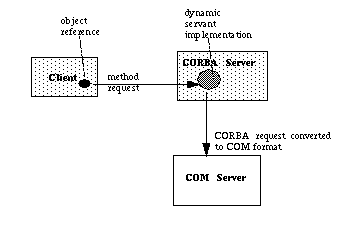
The Dynamic Skeleton Interface (DSI) allows servers to serve a servant object without prior (compile time) knowledge of the object's interface. Insead of using skeleton code compiled from the IDL interface definition, the server constructs an operation invocation dynamically.

The dynamic servant is implemented to convert the CORBA client
request to a format understood by the COM server. You must write
all the code to perform this work. Contrast this with a typical
static object invocation. The server has access to the compiled
skeletons for the interface being invoked. These skeletons are
generated by compiling the IDL interface definitions with the
idlj compiler. When the ORB receives a request, it
uses the skeleton code to build operation arguments on the server
side and to send back any result.